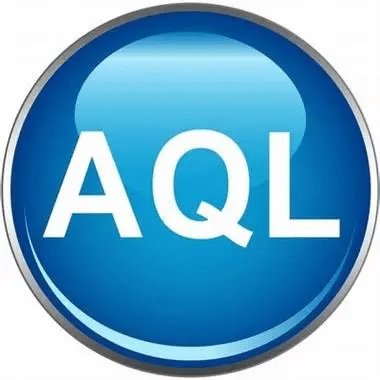In the bustling world of manufacturing and production, ensuring the quality of products is akin to crafting a masterpiece. Every brushstroke, every nuance matters. One method that has emerged as a cornerstone in this endeavor is AQL inspection – a meticulous process that resembles an artist’s discerning eye, bringing harmony and perfection to the canvas of production. In this post, we talk about the very essence of AQL inspection, understanding what it entails, how to select appropriate AQL and inspection levels, and why it is an indispensable tool for maintaining the integrity of goods.

What is AQL Inspection?
Just as an art curator selectively examines every brushstroke on a canvas, AQL (Acceptable Quality Limit) inspection involves scrutinizing a representative sample of a production batch to determine if it meets predefined quality standards. Like an expert appraiser, AQL inspection involves keen observation and analysis, gauging whether a product’s quality aligns with the desired specifications or if deviations are present.
This method is grounded in statistical sampling, allowing manufacturers to strike a balance between thoroughness and efficiency. Instead of inspecting every single item, which would be impractical and time-consuming, a subset is chosen for assessment – a snapshot of the whole, much like appreciating a work of art through a single frame.
How To Select AQL and Inspection Levels: Crafting the Perfect Equation
Selecting the right AQL and inspection levels is akin to a composer harmonizing different notes to create an enchanting melody. The AQL serves as the threshold – the boundary between acceptable and unacceptable quality. It’s the fine line that separates a masterpiece from mediocrity. Setting an appropriate AQL requires a deep understanding of both the product and its market.
Translating this concept into action involves determining the inspection levels: Level I, Level II, and Level III, each with increasing scrutiny. The selection of these levels is a delicate dance between risk and cost. Just as an artist balances light and shadow to give depth to a painting, manufacturers balance the costs of inspecting more items against the risk of letting defects slip through the cracks.
Understanding AQL and Inspection Levels
Level I, the most lenient level, is like a broad brushstroke that captures the overall essence. It suits when minor imperfections won’t significantly impact the end user’s experience – a blemish on a background detail, much like a distant mountain in a landscape.
Level II, comparable to a portrait artist’s attention to facial expressions, delves deeper. It’s ideal for goods with a moderate level of consumer interaction. Defects here could mar the overall impression, but not to a crippling extent.
Level III, the finest of strokes, reflects the meticulous attention of a miniaturist. This level befits products that directly affect user safety, like medical devices. Just as a single stroke can transform a face’s expression, even the minutest flaw can have grave consequences.
Navigating the Landscape of AQL Selection
Much like an explorer mapping uncharted territories, manufacturers delve into the realm of AQL selection with prudence. Factors such as product type, market expectations, and inherent risk guide the way. Just as a seasoned traveler consults maps and local advice, manufacturers refer to international standards and guidelines for AQL determination.
Moreover, shifting market dynamics necessitate periodic reassessment of AQL. Like the evolution of art styles, consumer expectations change over time. What might have been deemed acceptable yesterday could be a glaring flaw today.
The Ongoing Symphony of Quality
In the grand symphony of production, AQL inspection stands as a conductor, orchestrating a harmonious blend of quality and efficiency. Much like a conductor balances the contributions of different instruments, AQL strikes equilibrium between inspection rigor and feasibility. Just as an orchestra refines its performance through practice, manufacturers refine their AQL selection through data-driven insights.
As we traverse the ever-evolving landscape of manufacturing, let us remember that every product, every batch, is a canvas awaiting the brushstrokes of quality. With AQL inspection as our guiding compass, we ensure that each stroke contributes to a masterpiece, resonating with the symphony of consumer satisfaction and trust.
In this intricate dance of quality and production, AQL inspection isn’t merely a process; it’s an art form. An art that, when mastered, transforms the ordinary into the extraordinary and the flawed into the flawless. Just as a painter breathes life into a canvas, AQL inspection breathes life into products, ensuring they stand as testaments to precision, dedication, and the relentless pursuit of excellence.